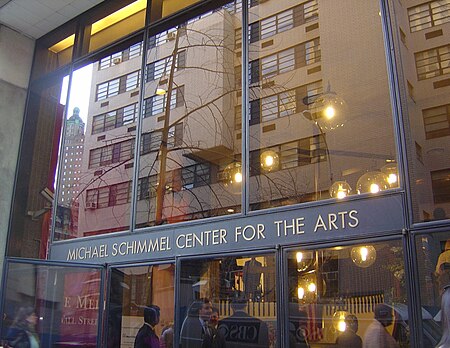Michael Schimmel Center for the Arts

The Michael Schimmel Center for the Arts is the principal theatre of Pace University and is located at the University's New York City campus in Lower Manhattan. Facing City Hall near the foot of the Brooklyn Bridge and blocks from the World Trade Center, it provides performance and assembly facilities to the university and the general public. The box office and theatre entrance are located on 3 Spruce Street, east of Park Row, near the corner of Gold Street. Named after Michael Schimmel, the center features a 655-seat theater, one of the largest theaters in Lower Manhattan. The center presents drama, dance, comedy, jazz, classical music and cabaret. Since September 2005, the center has been home to the television show Inside the Actors Studio. Beginning in the Fall of 2011, the Executive Director of the center, Martin Kagan, started a performance series that features dance, world music, cabaret, theatre, comedy and an art history lecture series by Dr. Janetta Rebold Benton.
Excerpt from the Wikipedia article Michael Schimmel Center for the Arts (License: CC BY-SA 3.0, Authors, Images).Michael Schimmel Center for the Arts
Brooklyn Bridge Promenade, New York Manhattan
Geographical coordinates (GPS) Address Website Nearby Places Show on map
Geographical coordinates (GPS)
| Latitude | Longitude |
|---|---|
| N 40.710775 ° | E -74.0046 ° |
Address
Pace University
Brooklyn Bridge Promenade
10000 New York, Manhattan
New York, United States
Open on Google Maps







